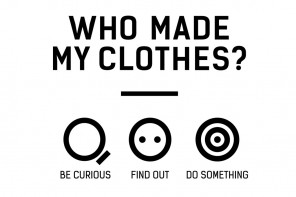Fast fashion has been getting bad press in recent years but sometimes we know it’s bad for the environment without understanding in what ways. It’s crazy to think that the fashion industry is the second largest reason for pollution after big oil. Here are ways it pollutes the earth and why you shouldn’t put it in your basket the next time you’re clothes shopping.
The Problem with Landfills
In the U.S., people throw away approximately over 10 million tons of textiles on a yearly basis. The problem with this is that the items can’t decompose, meaning that they continue to clog up the earth. Even biodegradable items, although better for the environment, can’t always decompose properly because landfills don’t have the correct amounts of moisture and oxygen in them to get this process going. This should make you even more aware of what you’re buying and avoid throwing away items as much as possible, whether or not they’re biodegradable, so that you prevent their ugly demise.
Throwing Threads Down the Drain
Even if you hold onto your fast fashion items in an attempt to prevent their final resting place being the landfill, you could still be adding pollution to the planet. When you wash your clothes in the washing machine, hundreds of fibres can be removed from the items, which makes them end up in the water system. This is bad news if the fibres contain chemicals as these toxins end up in the environment. Now there’s another good reason to hand-wash your clothes!
The Impact on Water
It takes thousands of litres water to produce just one basic wardrobe item, such as jeans or a simple cotton tee. This water could rather be going to people who need it, especially if you consider the millions of people who don’t have access to hygienic water. Added to this, almost 20 percent of water pollution from industrial sources comes down to textile treatment, such as dyeing of fabrics. There are also materials, such as polyester, that are commonly used in the production of fashion items but use up a lot of water during their manufacturing process. Dyed or polyester clothing are therefore best avoided as much as possible.
Toxins in Your Textiles
Materials such as nylon are made from petrochemicals but they use up loads of energy to be produced. The result isn’t pretty – they also give off nitrous oxide into the atmosphere. Nitrous oxide is a type of greenhouse gas that has 300 x stronger effect on the environment than CO2, contributing to global warming in a huge way.
Any item of clothing that offers easier wear, such as if it doesn’t wrinkle, get stained easily or is moth-repellent, is likely to contain harmful toxins such as perfluorinated chemicals. These PFCs remain in the human body and environment for years, making their way into the food chain and can cause cancer as well as disrupt hormones.
Another harmful toxin is formaldehyde. Clothing that has been treated with fire-retardant gas, such as and baby and children’s pyjamas, emits formaldehyde into the air. This gas can irritate the eyes, nose, throat, and lungs. It could even cause cancer. So, you don’t want to get up close and personal with it.
Fast fashion can pollute your world and the environment in various ways. Your best bet is to stop bringing it home and if you already have items of fast fashion, try to upcycle them as much as possible to prevent them from entering landfills.
Image credit: LoloStock / Dollar Photo Club









